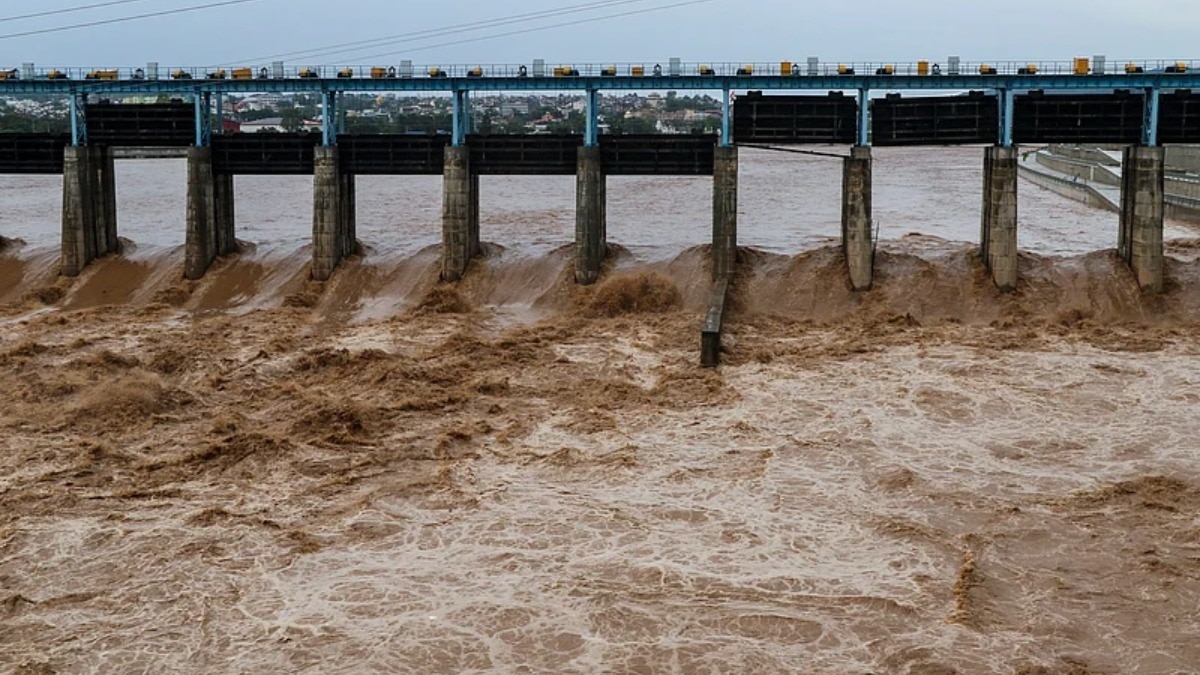 |
|
The escalating tensions between India and Pakistan find a new dimension as India issues urgent flood warnings to its neighbor, revealing a delicate balance between geopolitical discord and humanitarian responsibility. The core of the matter lies in the Indus Waters Treaty, a 1960 agreement brokered by the World Bank, which meticulously outlines the rights and obligations of both nations concerning the utilization of the Indus River and its tributaries. Despite the treaty's existence, a rupture in routine hydrological data sharing, instigated by the April 22 terror attack in Pahalgam, Jammu and Kashmir, threatened to escalate the situation. The attack, which claimed the lives of 26 people, predominantly tourists, and was attributed to Pakistan-based terrorists, cast a long shadow over the already strained relationship between the two nations. This suspension of data sharing added a layer of complexity to the unfolding scenario, potentially exacerbating the impact of the impending floods.
The essence of the warning conveyed by India centers on the imminent release of excess water into several key rivers, including the Ravi, Chenab, and Sutlej. The sheer volume of water being discharged is projected to trigger significant flooding, posing a grave threat to communities residing along the riverbanks. Moreover, India's proactive stance extended to issuing multiple flood alerts for the Tawi river, highlighting the 'high probability' of flooding due to incessant rainfall across northern India. The opening of the gates of key dams, necessitated by the excessive rainfall, further compounded the risk. This series of actions underscores the gravity of the situation and the potential for widespread devastation if adequate precautions are not taken. The Tawi river, originating in the Himalayas and traversing through Jammu before its confluence with the Chenab in Pakistan, is particularly susceptible to flooding, adding another layer of concern.
India's decision to communicate these flood warnings, despite the suspension of regular hydrological data exchange, highlights a crucial commitment to humanitarian principles. By prioritizing the safety and well-being of populations across the border, India showcases a level of responsibility that transcends political differences. This act of goodwill serves as a testament to the enduring importance of human life, even in the midst of strained relations. The Ministry of External Affairs played a vital role in disseminating these alerts, ensuring that the information reached the Pakistani authorities in a timely manner. The issuance of these alerts, commencing on Monday and continuing through Wednesday, underscores the urgency of the situation and the need for immediate action.
The ramifications of these events extend beyond the immediate threat of flooding. The heavy rainfall in the catchment areas of the Sutlej, Beas, and Ravi rivers in Punjab, coupled with the relentless showers experienced in Jammu, have pushed river levels to dangerously high levels, necessitating the opening of sluice gates at major reservoirs. These developments have far-reaching consequences for the region's infrastructure, agriculture, and overall stability. The potential for widespread displacement, damage to property, and disruption of essential services looms large. Moreover, the situation raises critical questions about the long-term management of water resources in the region and the need for enhanced cooperation between India and Pakistan to mitigate the impact of future natural disasters.
The backdrop to this unfolding crisis is the complex and often fraught relationship between India and Pakistan. The Indus Waters Treaty, despite its longevity, has faced numerous challenges over the years, reflecting the underlying tensions between the two nations. The suspension of hydrological data sharing, triggered by the Pahalgam terror attack, underscores the fragility of this agreement and the potential for political events to disrupt established protocols. The fact that India chose to communicate flood warnings, even in the absence of regular data exchange, highlights the inherent limitations of relying solely on formal agreements in times of crisis. It also demonstrates the critical role of informal communication channels and the willingness of both sides to engage in dialogue, albeit limited, to address urgent humanitarian concerns.
The broader implications of this situation extend to the realm of regional security and stability. The Indus River basin is a vital lifeline for both India and Pakistan, providing water for agriculture, industry, and domestic consumption. Any disruption to the flow of these waters has the potential to exacerbate existing tensions and trigger conflict. The sharing of hydrological data is essential for effective water management and for preventing misunderstandings that could escalate into larger disputes. The suspension of this data exchange raises concerns about transparency and accountability, and it underscores the need for both nations to prioritize dialogue and cooperation to ensure the sustainable management of this shared resource.
Looking ahead, it is imperative that India and Pakistan find ways to restore trust and rebuild confidence in their ability to manage their shared water resources in a responsible and equitable manner. This will require a commitment to upholding the principles of the Indus Waters Treaty, as well as a willingness to engage in open and transparent communication. The establishment of effective mechanisms for resolving disputes and for addressing emerging challenges, such as climate change and water scarcity, is also crucial. By fostering a spirit of cooperation and mutual respect, India and Pakistan can transform their shared water resources from a potential source of conflict into a catalyst for peace and prosperity. The alternative is a future characterized by increasing water stress, heightened tensions, and the potential for catastrophic consequences for both nations. The decision lies in their hands to choose a path of cooperation or confrontation, and the future of the region hinges on that choice. The humanitarian gesture of issuing flood warnings, despite the existing tensions, serves as a glimmer of hope, suggesting that even in the most challenging of circumstances, the imperative to protect human life can prevail.
Source: India issues fresh flood warnings to Pak as key rivers swell amid heavy rain
